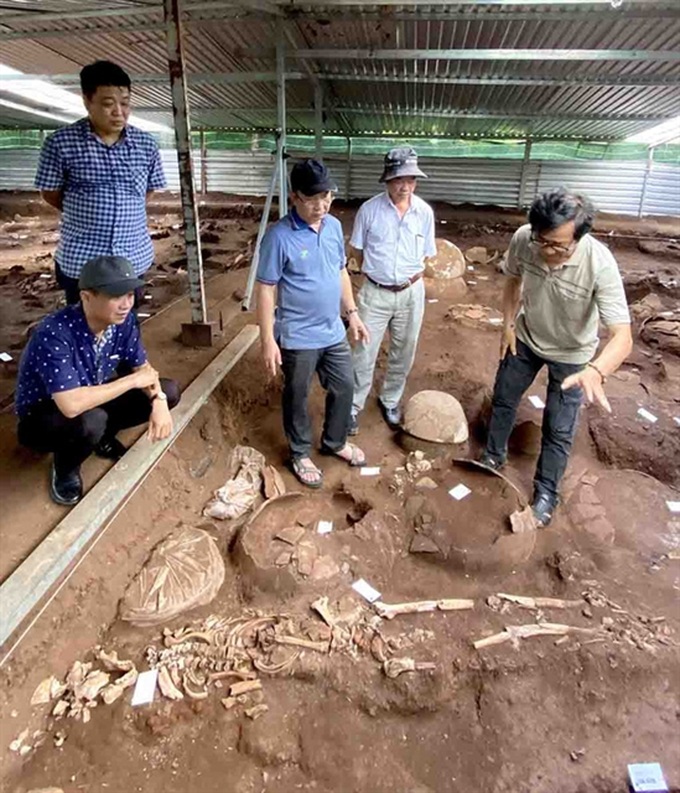An ancient human skeleton dating back about 2,300 years has been discovered at the Giồng Cá Vồ archaeological site in HCM City’s Cần Giờ District.

A 2,300-year-old human skeleton is unearthed in HCM City’s Cần Giờ District. Photo nld.com.vn
According to specialists, the skeleton belongs to a 1.65m-tall man with high social ranking due to two animal fangs found on his neck.
Giồng Cá Vồ archaeological site was discovered in 1993 and first excavated in 1994.
The total area of the site is 29,000sq.m, the centre of which is located on a red soil mound, about 1.5m higher than the surrounding area and covers an area of 7,000sq.m.
Prior to the discovery of the ancient skeleton, archaeologists have excavated 185 burial jars and 13 earthen tombs, along with hundreds of precious relics made of various materials like precious stones, glass, and mollusks, at Giồng Cá Vồ archaeological site.
Some relics have been discovered for the first time at the site, such as animal-shaped earrings, three-pointed earrings or gold leaves, which contain historical, cultural values and especially the history of formation and development of this land over 2,000 years ago.
The archaeologists have determined that the age of the archaeological site is from 2,500BC to the early AD years.Excavation results also show that the central area of Giồng Cá Vồ is divided into three phases: residence, burial and modern farming.
Based on the study of anthropological characteristics of the artefacts, Assoc. Prof. Nguyễn Lân Cường, General Secretary of the Vietnam Archaeological Association (VNAA), said that the area used to be occupied with indigenous groups, mainly natives of Đồng Nai culture, who had cultural exchanges with the outside world.
Meanwhile, Assoc. Prof. Tống Trung Tín, Chairman of the VNAA, noted that this is the first time Vietnamese archaeologists have discovered such a density of burial jars at a relic site and the stratigraphic column is clarified with the continuous development from residence relics to burial relics.
He therefore requested HCM City and specialists to compile a dossier to submit to the Government to recognise Giồng Cá Vồ as a special national relic.
According to Dr Hsiao Chung Hung, an archaeology expert from the Australian National University, Giồng Cá Vồ archaeological site is an important prehistoric archaeological site not only in Vietnam but also in Southeast Asia and Asia.
Located at the central point connecting the east and west, north and south regions, this site might have been a busy port and home to a large number of craftsmen and artisans about 2,500 years ago, as it is implied by the excavated items.
It was recognised as a national archaeological relic that needs to be protected in 2000 by the then Ministry of Culture and Information.
Currently, the artefacts excavated at Giồng Cá Vồ archaeological site are displayed in a number of museums such as the National Museum of History in Hanoi, the Museum of Vietnamese History in HCM City and the Museum of Southern History and Culture.
